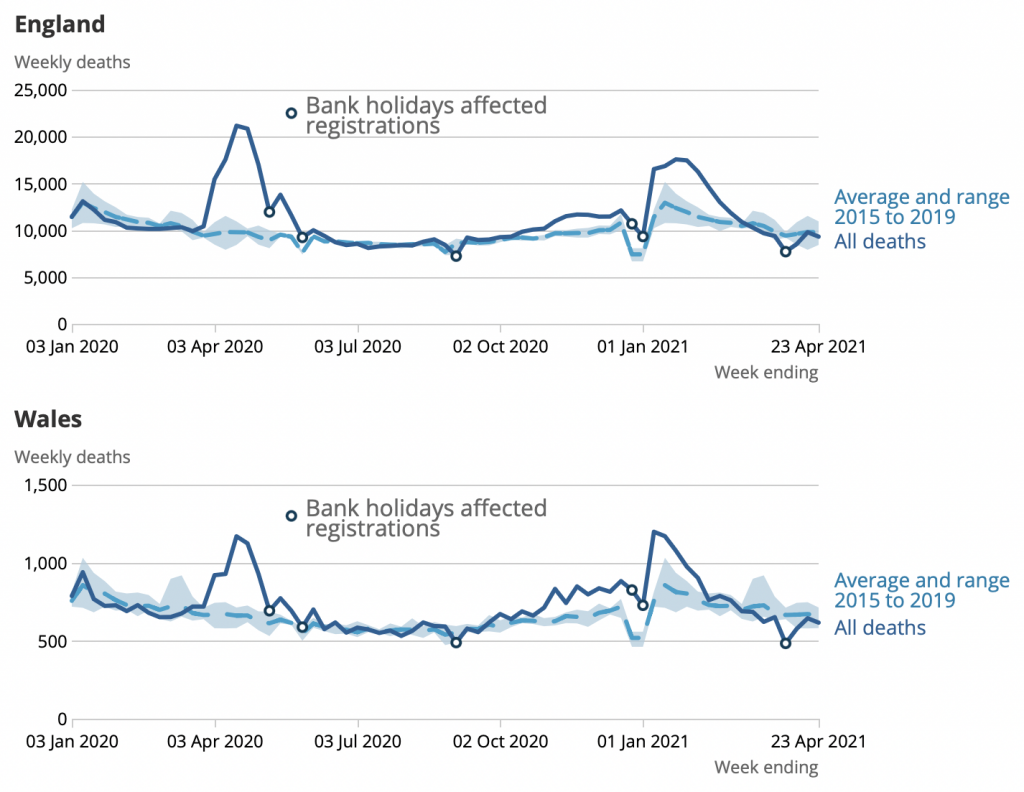The ONS announced today that there were 9,941 deaths in England and Wales in the week ending April 23rd, which is 497 fewer than the previous week. In addition, this week’s number is 5% below the five-year average, and marks the seventh consecutive week of “negative excess deaths”. Here’s the chart from the ONS:

Over the last seven weeks of ONS reports, there were 5,511 fewer deaths than you’d expect based on the average of the last five years. And recall that, because the population is ageing, the five-year average slightly understates the expected number of deaths. So the true level of “negative excess mortality” is even higher.
The number of deaths registered in the week ending April 23rd was below the five-year average in eight out of nine English regions. (Only London saw positive excess deaths.) Compared to the five-year average, weekly deaths were 6.8% lower in Wales, and 8.1% lower in the South East.
At the beginning of April, David Spiegelhalter and Anthony Masters wrote a piece suggesting a number of possible reasons for the low number of deaths in England and Wales: mild weather; fewer road accidents and flu deaths due to lockdown; and deaths having been “brought forward” by the pandemic.
Given that we are no longer in winter or the flu season, and there has been an increase in mobility since March, it seems unlikely that the first three factors they mentioned can account for more than a small share of the “negative excess deaths” observed in April. Rather, this phenomenon is probably explained by deaths having been “brought forward” by the pandemic.












To join in with the discussion please make a donation to The Daily Sceptic.
Profanity and abuse will be removed and may lead to a permanent ban.